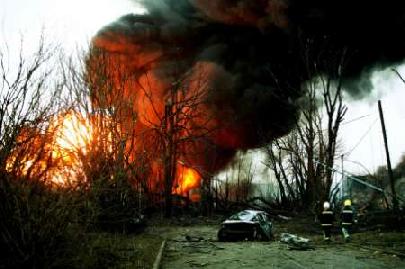
Buncefield oil depot exploded and eventually catapulted it the headlines of all newspapers, online magazines and the television. But, what led to this huge blaze?
Some of the reasons theorized as follows.
Accident
Oil refineries are far more hazardous than storage depots. But, the safety records at Buncefield and the 50 other major oil and fuel storage depots across the country are good.
Arson
Buncefield is well secured a zone. The 100-acre site is surrounded by security fences and CCTV. It is staffed 24 hours and all visitors are required to identify themselves and sign in at the base.
Pipeline malfunction
Four major supply pipelines carry fuels into Buncefield. To stop even more fuel fanning the flames, all pipelines were shut down immediately after the explosion.
Human error
Though under the International Small Site Safety Rating System, Buncefield does not achieve the highest level of safety, it ranks at level 3, one below the highest rating. Though on a normal working day, there would be nine staff working there, early on the incident day there were just two staff on site.
Storage tank failure
One eyewitness reported seeing smoke rolling off several of the tanks. The electricity on the site also went down and alarms sounded before the explosion.
Plane crash
Luton airport is nearby. And some residents reported hearing an aircraft flying overhead shortly before the explosions. But, police later confirmed that no plane had been involved in causing the explosion.
Terrorist strike
a terrorist strike was judged highly unlikely by security sources and terrorism experts. But, since militant Islamists were urged last week to attack oil installations in Muslim countries by Ayman al-Zawahiri, al-Qaida’s deputy leader, police would not rule out the blast being a planned act straight away.
But above all, since the first blast happened early on Sunday, it caused minimum damage.
Via: The Guardian

